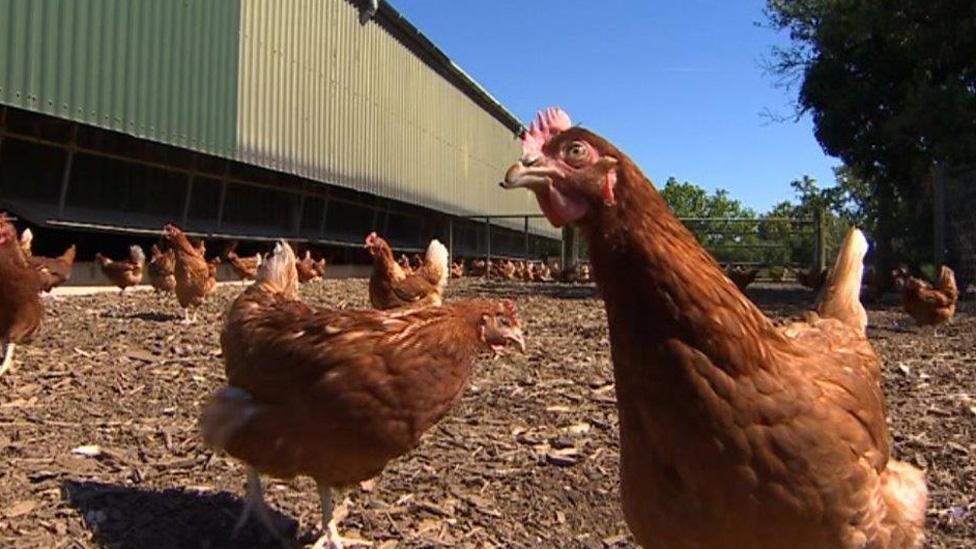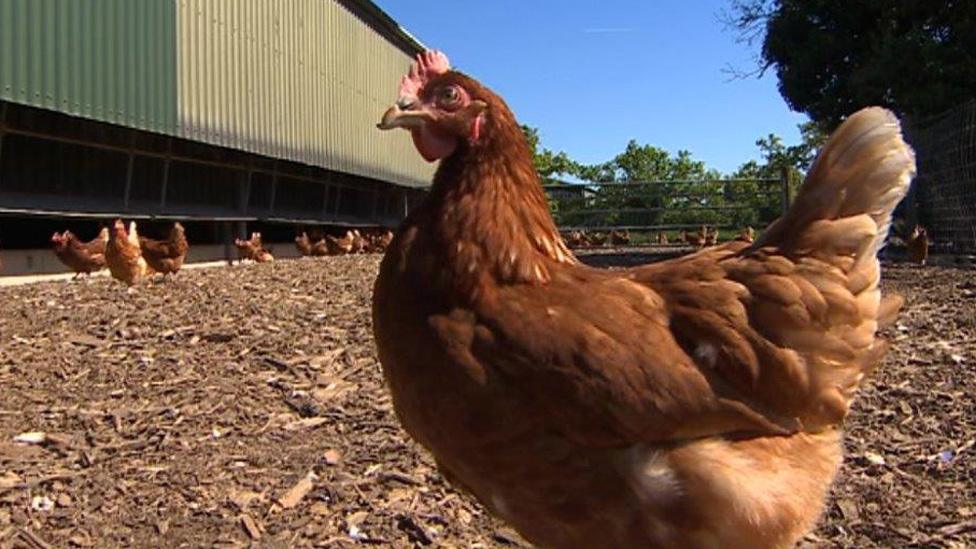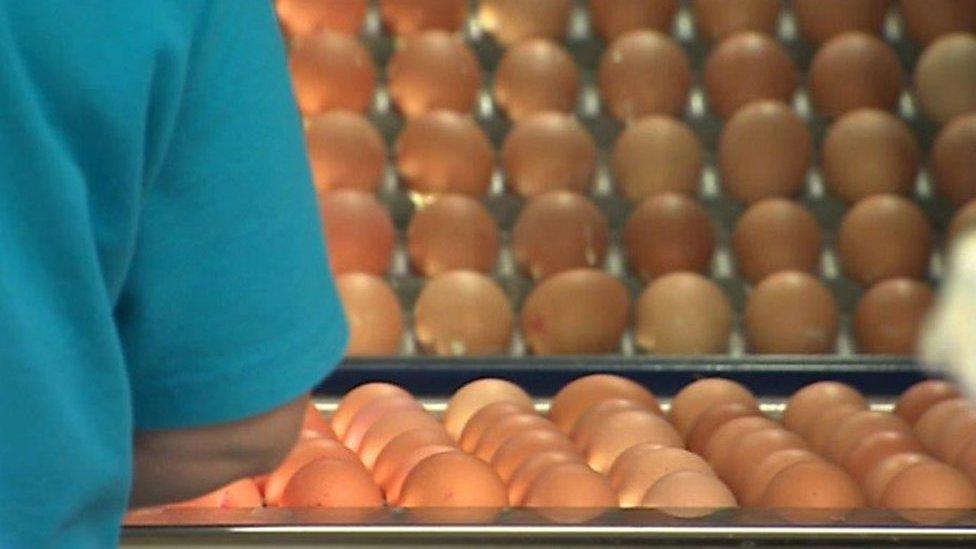Environmental campaign calls for pause in Powys poultry farm approvals
- Published

Campaigners say 139 applications for poultry units have been approved in Powys since 2015
Campaigners in mid Wales are calling for a halt on approvals of new poultry farms until the environmental impact is clearer.
The Campaign for the Protection of Rural Wales (CPRW) estimates Powys has 10 million chickens on 200 farms.
The charity is concerned about the impact of phosphates and ammonia on ecology and biodiversity.
But farmers said their units were run to high environmental standards, and were regulated and routinely inspected.
The CPRW said it was concerned by the impact on the Powys landscape of large poultry units and that ammonia emitted from the units could damage plants, while phosphates from chicken manure polluted rivers.
'Unprecedented density'
According to the charity, 139 applications for poultry units had been approved in Powys since 2015 to house a total of 4.5 million chickens, with only one application being refused.
Dr Christine Hugh-Jones, secretary of Brecon and Radnorshire CPRW, said: "I'm concerned that the rivers will just die. They are dying and that means the whole ecological chain.
"I think we're seeing an unprecedented density. I think until people know what the impact of all this is, and some basic research is done on it, there should be a moratorium on more approvals."
Gwyn Price, a lamb and beef farmer in Radnorshire who also has poultry sheds for 24,000 chickens, said: "When you go for planning permission for a chicken house there are a lot of regulations.

Farmers say diversifying into egg production helps businesses survive and keeps young people in rural communities.
"Our rivers are tested regularly and although the chicken sheds are increasing the actual phosphate levels in the river, NRW (Natural Resources Wales) tell us, are going down.
"So it proves there is not a strong link between the chicken farmers and the phosphate."
He said diversifying into poultry and egg production had enabled many farmers to secure their businesses, which kept young people in rural communities.
Powys County Council said it was "unable to impose a moratorium on any type of planning application".
- Published15 May 2018

- Published15 May 2018
